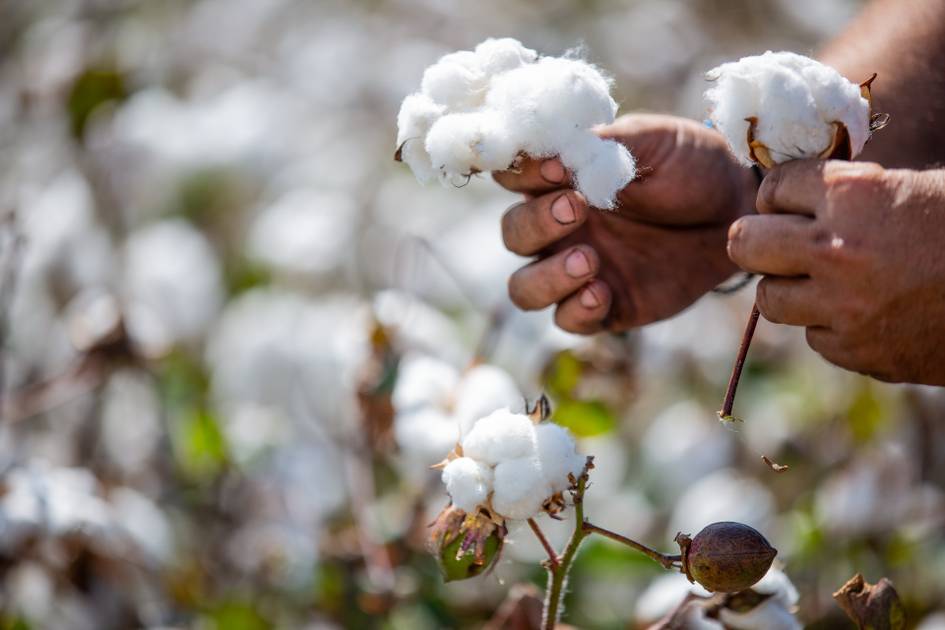Tanzania’s cotton sector sees alarming pesticide poisoning rates
Cotton picking Credits: Nafpaktos Textile Industry S.A. A new study has cast a troubling spotlight on the health risks faced by Tanzania’s cotton farmers, reports UK charity Pesticides Action Network (PAN UK). The data reveals widespread pesticide poisoning linked to the continued use of highly hazardous pesticides (HHPs). As cotton remains a cornerstone of Tanzania’s rural economy—supporting over 500,000 households—these findings raise significant concerns for fashion professionals seeking to align supply chains with responsible sourcing practices. Published in Toxics, the study surveyed 1,074 smallholder farmers and farm workers, with 48 percent reporting symptoms consistent with acute pesticide poisoning in the past year. Despite the severity, only 6 percent sought formal medical care, suggesting a stark underreporting of health impacts in the sector. “This large-scale study provides important new evidence of the impact of hazardous pesticide use on the health of farmers and workers in Tanzania,” said Raphael John Mwezi, Head of the Toxicology Unit at the Tanzania Plant Health and Pesticides Authority. “The large numbers of farmers reporting pesticide poisoning is alarming and warrants swift action.” The data points to a handful of active ingredients—profenofos, chlorpyrifos, lambda-cyhalothrin, and cypermethrin—as responsible for over 80 perent of reported incidents. Profenofos alone, banned in over 30 countries, was linked to 252 cases, with symptoms ranging from respiratory distress to loss of consciousness. Chlorpyrifos, under international scrutiny for its health impacts, was also heavily implicated. Crucially, the study underscores how exposure is not limited to those directly applying pesticides. Women reported exposure while performing secondary tasks such as entering recently treated fields or laundering contaminated clothing. This gendered dimension, along with limited access to adequate protective gear, complicates prevention strategies. “Promoting personal protective equipment (PPE) is widely seen as sufficient,” said Professor Andrea Rother of the University of Cape Town. “But the study shows that PPE alone does not significantly reduce unintentional acute pesticide poisoning, especially given Africa’s climatic and gender-specific constraints.” The study’s authors advocate for urgent regulatory reform, increased community surveillance, and a transition towards safer pest management practices. They highlight the expanding organic cotton sector in Tanzania as proof of viable, less toxic alternatives. Professor Deodatus Kakoko of MUHAS echoed the call: “This robust study reveals a significant problem. More routine surveillance is needed to detect and address these issues moving forward.” For an industry increasingly under scrutiny for its environmental and social footprint, the findings serve as a pressing reminder that true sustainability must extend beyond materials to encompass the health and dignity of those who cultivate them.

A new study has cast a troubling spotlight on the health risks faced by Tanzania’s cotton farmers, reports UK charity Pesticides Action Network (PAN UK). The data reveals widespread pesticide poisoning linked to the continued use of highly hazardous pesticides (HHPs). As cotton remains a cornerstone of Tanzania’s rural economy—supporting over 500,000 households—these findings raise significant concerns for fashion professionals seeking to align supply chains with responsible sourcing practices.
Published in Toxics, the study surveyed 1,074 smallholder farmers and farm workers, with 48 percent reporting symptoms consistent with acute pesticide poisoning in the past year. Despite the severity, only 6 percent sought formal medical care, suggesting a stark underreporting of health impacts in the sector.
“This large-scale study provides important new evidence of the impact of hazardous pesticide use on the health of farmers and workers in Tanzania,” said Raphael John Mwezi, Head of the Toxicology Unit at the Tanzania Plant Health and Pesticides Authority. “The large numbers of farmers reporting pesticide poisoning is alarming and warrants swift action.”
The data points to a handful of active ingredients—profenofos, chlorpyrifos, lambda-cyhalothrin, and cypermethrin—as responsible for over 80 perent of reported incidents. Profenofos alone, banned in over 30 countries, was linked to 252 cases, with symptoms ranging from respiratory distress to loss of consciousness. Chlorpyrifos, under international scrutiny for its health impacts, was also heavily implicated.
Crucially, the study underscores how exposure is not limited to those directly applying pesticides. Women reported exposure while performing secondary tasks such as entering recently treated fields or laundering contaminated clothing. This gendered dimension, along with limited access to adequate protective gear, complicates prevention strategies.
“Promoting personal protective equipment (PPE) is widely seen as sufficient,” said Professor Andrea Rother of the University of Cape Town. “But the study shows that PPE alone does not significantly reduce unintentional acute pesticide poisoning, especially given Africa’s climatic and gender-specific constraints.”
The study’s authors advocate for urgent regulatory reform, increased community surveillance, and a transition towards safer pest management practices. They highlight the expanding organic cotton sector in Tanzania as proof of viable, less toxic alternatives.
Professor Deodatus Kakoko of MUHAS echoed the call: “This robust study reveals a significant problem. More routine surveillance is needed to detect and address these issues moving forward.”
For an industry increasingly under scrutiny for its environmental and social footprint, the findings serve as a pressing reminder that true sustainability must extend beyond materials to encompass the health and dignity of those who cultivate them.



































































![[Podcast] Behind the Breakthroughs: How Almac Powers Clinical Trial Success with Care](https://imgproxy.divecdn.com/5lAJkli_KcGt1FSsw4EaegjgP76IHREqYEWbhNBJOXw/g:ce/rs:fit:770:435/Z3M6Ly9kaXZlc2l0ZS1zdG9yYWdlL2RpdmVpbWFnZS9CaW9QaGFybWFEaXZlXzEzNDZfeF83MjlfQXJ0d29yay5qcGc=.webp)






























































































.jpg)






